The mind-boggling extravagance of feasts hosted by Roman emperors depended on an equally mind-boggling maldistribution of wealth
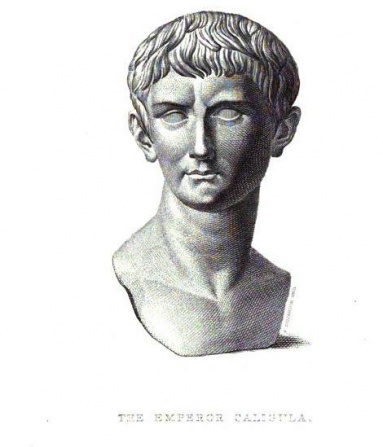
Images from The Lives of the Roman Emperors and Their Associates (1883)
“All things are subject to interpretation; whichever interpretation prevails at a given time is a function of power and not truth.” --Friedrich Nietzsche
This is the first in a series of pieces on what it would be like to dine with well-known historical figures.
In the year 39 CE, Gaius Julius Caesar Augustus Germanicus, then just two years into his reign, built a bridge across the Bay of Baiae near Naples.
Spanning some 3,600 feet, this engineering marvel required the lashing together of so many boats that none were left for grain transport. (As a consequence Rome suffered a food shortage.) The deck of each boat was covered with soil, the visual effect of which was that of a road floating over the sea.
The bridge made the emperor, who was known popularly as "Caligula" ("Little Boot"), a nickname he had acquired in the army, feel as if he had conquered nature. Indeed, that the sea had remained calm during its construction seemed to him evidence of the gods’ approval.
On the day of the bridge’s dedication, Caligula arrived on a richly caparisoned horse. On his chest was a breastplate that had belonged to Alexander the Great; on his head, a wreath of laurels. Hundreds of candles and torches lit his way, their light such that he would later boast that he had turned night to day. Behind him followed hundreds of nobles excited by his promise of revelry and “a new kind of spectacle, such as had never been heard of before,” as the ancient Roman historian Suetonius writes. Caligula led his retinue to the middle of the bridge, where they could better see the mock sea battles to be waged for their entertainment.
As they awaited this spectacle, the guests, noble Romans all, drank and ate, ate and drank. The wine got to them -- so much so that many staggered off the bridge into the water. Whenever a guest would surface an oar brandished by one of Caligula’s soldiers met his head and pushed it under again. Apparently eager to increase his sport, Caligula ordered that all guests who managed to remain on the bridge be thrown from it. The same calm sea that had favored the bridge’s construction also favored the hapless diners; had the water been rougher many more would have died.
It was no light thing, eating with Caligula. The threat of death loomed over whatever pleasure there was to be had in fine dining and entertainment.
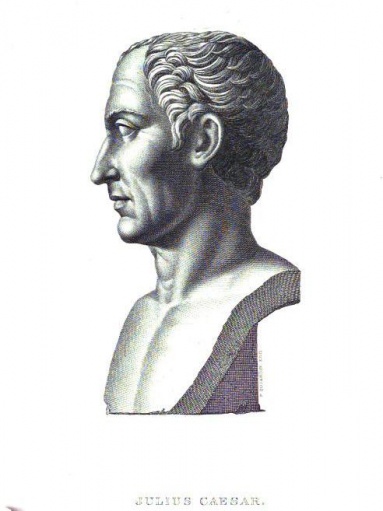
“Labor fell to the lowest degree of contempt, and the laborer was a thing to be spurned -- for the free citizen to labor with his hands was more disgraceful than to die of starvation. Hence there was a class of citizen paupers to whom largesses of corn were doled out by the demagogues of the Senate and the army. Ultimately these citizen-paupers became so vile and filthy that they engendered leprosy and other loathsome diseases, as they dragged their palsied limbs through the streets of the city, crying, ‘Bread and circuses! bread and circuses!’” --Charles Henry Ham, Mind and Hand: Manual Training, the Chief Factor in Education (1900)
Caligula wasn't always such a sadist. He was pleasant enough an individual in his youth, and generous when the notion seized him. When he assumed the throne in CE 37, he gave commoners 300 sesterces and nobles fine clothes. The early years of his reign saw him frequently in Rome’s streets handing out presents and food to any who wanted them. He lifted certain taxes, restored property lost in fires, and revived democratic elections. Hugely fond of spectacle, he commissioned circuses that featured panther baiting, jousts, and chariot races -- all sports Romans loved. And he hosted Latin and Greek grammar competitions in which losers awarded the winners prizes, though not before having to erase any mistakes they made by licking them from their slates.
As Caligula aged, however, he grew melancholy and capricious. His very person seemed to reflect his dark moods. He was tall, pale, and quite hirsute. Deeply hollow temples bookended his sunken eyes and furrows topped them. He looked unwell, and, as it happened, he suffered from insomnia and epilepsy. Some thought him insane, for his antics were bizarre. Sometimes he dressed as Zeus and carried a thunderbolt or three-tined mace. Other times he dressed as a woman or as Alexander the Great.
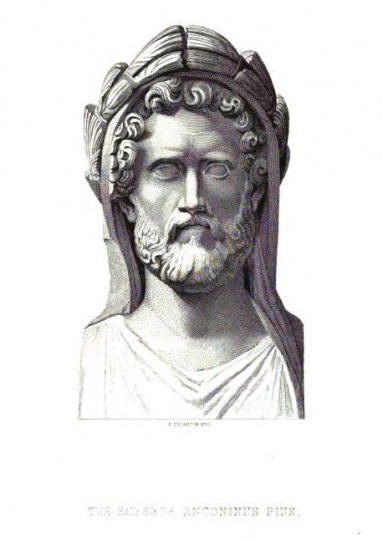
Such were Caligula's more benign whims. The moody, unpredictable emperor also had his brother killed and his father-in-law slit his own throat. His sister Drusilla he raped, and his other sisters he prostituted to his catamites. He stole brides from their very wedding feasts and fed criminals to wild animals. To cause famines he blocked granaries. If he judged the famine to be not dire enough, he petitioned the gods to visit disease, earthquake, fires, and war on Rome, all so he could claim to have lived in interesting times.
It is no wonder then that interesting times were also likely to be had by guests at dinners hosted by Caligula. Sometimes he startled his consuls from their dining by laughing uproariously. When they asked why he laughed so, he would reply that it was because he could have them executed at any second. As if to emphasize this fact, he often had a prisoner dispatched before them. Slaves likewise served to sate his bloodlust. Once at a public feast in Rome he saw a servant steal a silver plate. He immediately had the offender’s hand cut off and hung around his neck, all while the guests continued eating.
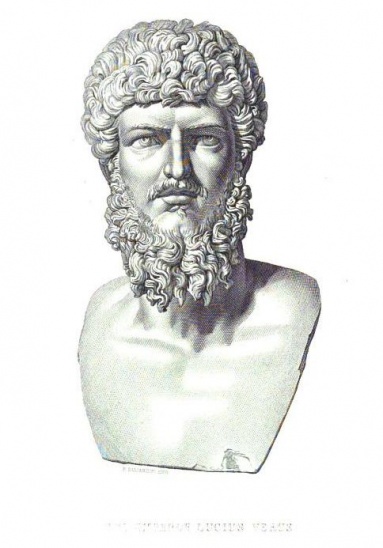
“Such is the intemperance of some, that, as the French proverb says, They dig their graves with their teeth; while the kitchen is their shrine, the cook their priest, the table their alter, and their belly their god.” --Charles Buck
Caligula was not alone in his love of spectacle, violent or otherwise. Dinner with the Roman elite was usually a lavish event: a feast for the eyes as well as the senses. Food would be served atop tables of citrus wood and ivory, which were flanked by couches ornamented with silver and gold plates and purple and gold cloth. Tableware was equally sumptuous, and included candelabra as well as drinking cups of silver, gold, crystal, agate, amber, and onyx.
Pliny reports that the emperor Nero once paid a million sesterces for a single wine-bowl.
Filling such precious vessels with wine were clean-shaven, long-haired youths. Indeed, attendants and entertainers were legion. Children circulated gingerly amid finery and guests, bearing bowls of food. Acrobats might tumble and leap, troupes of naked girls dance, or gladiators make show of their muscular talents. A lion or tiger might lounge in a corner of the chamber. And raining upon this wonderful and luxuriant heap of bodies, food, and wares were flowers, saffron, and other fragrant plants. “The floor was filthy, muddy with spilt wine, covered with drooping garlands and flowers,” wrote Quintilian of the aftermath of one such banquet.
The Greek glutton Philoxenus wished for a throat of a crane or vulture so that he might enjoy his food longer.
“A morbid sort of gluttony has been supposed to exist, called fames canina, ‘dog-like appetite,’ which sometimes occurs, and renders the person seized with it an object of cure as in other diseases … But professed habitual gluttons may be reckoned amongst the monsters of nature, and for this reason James I, was not greatly in the wrong when he asked a man who was presented to him that could eat a whole sheep at one meal, ‘What could he do more than another man?’ and being answered, ‘He could not do so much,’ said, ‘Hang him then; for it is unfit a man should live that eats as much as twenty men, and cannot do so much as one.’” —Pantologia, A New (Cabinet) Cyclopedia (1813)
Rare and often sourced abroad, the fare of a noble Roman feast was more ornament than nourishment. And the elite did their best to outdo one another. The emperor Vitelius commanded that an enormous cooking pan be made. The result was the largest pan in the world in its day, its use requiring a special furnace. In it cooked “the livers of pike, the brains of pheasants and peacocks, the tongues of flamingos and the milk of lampreys, brought by his captains and triremes from the whole empire, from Parthia to the Spanish strait,” as Suetonius writes. The feasts of Metellus, a consul from one of Rome’s wealthiest families, featured numerous courses of foods from the sea, air, and land. One feast began with a course of oysters and other shellfish and moved to courses of thrush, fattened fowl, venison haunch, sow udder, and boars’ head.
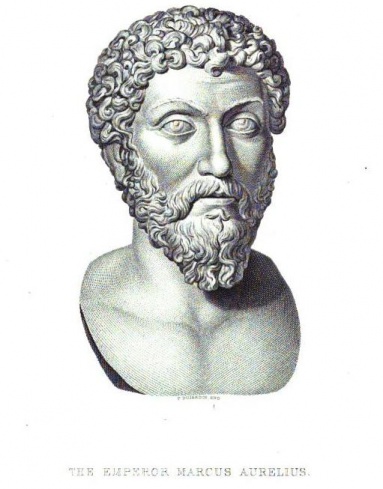
Elagabalus liked to say that “the meat was not savoury whose sauce was not costly.”
Perhaps outdoing all of his predecessors was Elagabalus, who was emperor during the western Empire’s hopelessly decadent final years. The farthest reaches of the animal kingdom he had plundered in order to present the imperial court with moray innards, flamingo brains, and parrots’ heads, peacocks, and pheasants. He ate camel’s feet and combs cut from living birds. For ten days in a row he served the udders and uteruses of wild sows. Peas flecked with gold, lentils with onyx, beans with amber, rice with pearls -- these were the side dishes that might accompany the main fare. His guests delighted in plucking the gems from their dishes (and pocketing them), even if their discovery cost a cracked tooth or two.
These banquets had the unfortunate effect of pushing the price of food higher, putting it even more out of the reach of common people.
“The emperor Clodius Albinus would devour more apples at once than a bushel would hold. He would eat 500 figs to his breakfast, 100 peaches, 10 melons, 20 pound weight of grapes, 100 gnat-snappers, and 400 oysters. ‘Fye upon him (saith Lipsius;) God keep such a curse from the earth.” -- Pantologia, A New (Cabinet) Cyclopedia (1813)
The high esteem for foreign foodstuffs owed in part to the fact that they were the fruits of empire. Yet they also attested to the great wealth and influence of the dinner host. Spanish pickles, ham from Gaul, Libyan pomegranates, British oysters, and Indonesian spices all made regular appearances at the tables of the rich. Creatures common to Rome were fattened in order to appear foreign. Servants of rich Romans used milk to fatten snails and dormice, and chewed bread to plump up pigeons whose wings they had first broken. A main course might marry the raw and the cooked -- roast boar stuffed with live birds, for example. On these stuffed delicacies guests stuffed themselves, perhaps coming to feel similar to Trimalchio of Petronius’s
Satyricon, who observed, “The disgusting abundance of the course made us prefer to die of hunger.”
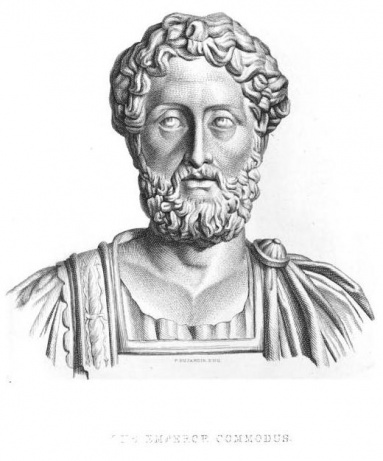
Domitian liked his dinner parties to resemble funeral rites. He had a room painted black, and outfitted with black couches.Guests were invited to this macabre feast alone, with only their slaves in attendance. Besides each of their places was a a slab shaped like a gravestone bearing his name, as well as a small lamp like those that hung in tombs. Slave boys painted black like phantoms sat by the feet of each diner, and foods normally only served at sacrifices were served to each guest. Only Domitian spoke, and he spoke of death and slaughter. It was reported that his guests trembled lest their throats be cut. The food was not that of the funeral feast, but rather the food that the deceased was expected to eat.
Though raw and cooked foods may have mingled promiscuously, the feast of which they were part served to draw the clear symbolic distinction between eater and eaten. The first could never be food for the second, because he was above the law. Indeed, many Roman feasts were arranged in a such a way as to assure that guests violated each of the laws in force since 215 BCE. Known as the
Sumptuariae Leges, the laws forbade excessive spending on dinner parties, banned foreign wine, and prohibited the fattening of food animals by artificial means. They were enacted in service to the idea that noble Romans subsisted on a wholesome, plain diet -- lentils, bread, cheese, and olives for the most part.
The gods themselves ate food that was close to nature: plain cake and fruit, honey, milk, organ meats, and wine.
A lavish diet meant privilege. The Roman elite thus scrambled after all that was scarce in order to make it scarcer still. Caligula himself drank pearls dissolved in vinegar, and had his table set with loaves of bread fashioned from gold. His belief was that one must either be frugal or be Caesar. He much preferred being Caesar, because it meant being a god.
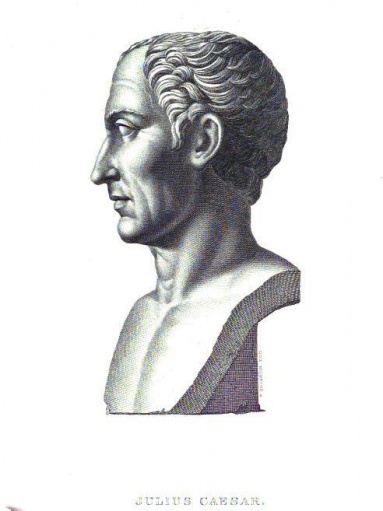
Of the Emperor Claudius's dining habits, Suetonius wrote: "He did not often leave the triclinium before he had eaten and drunk his fill. Having done so he would fall asleep straight away, on his back and open mouthed. A feather would then be put into his throat, to unburden his stomach."
In the early years of the Antonine plague, which arrived in 165 CE, the Empire is said to have had a population of 60 million people, of whom 6 million were slaves.
And even gods must have their amusements. Relief from boredom explains part of why such dazzling dinner parties were thrown. Noble Romans, like the rich of today, realized a great surplus of leisure. Caligula himself was so nervous and high-strung that he was always looking for diversion. But elite feasts also served an important political and social function. Most Romans lived at subsistence level, especially after emperors placed themselves out of reach of their subjects by styling themselves
dominus et deus, or "lord and god." These gods could not be concerned with the plight of the common Roman, who suffered few employment prospects and survived on handouts of grain and pork fat. Indeed, by Augustus’s reign (27 BCE–14 CE) some 320,000 adult men -- nearly a third of the total population -- were receiving grain. To fund such subsidies (and the excesses of the imperial court) heavy taxes were levied on those who had employment or property. And then there were the slaves, who represented some 10 percent of the Empire’s population. In some areas the figure was more like 20 percent. Though many of these slaves were quite learned, pursuing such vocations as medicine and law, the life they led was usually was usually devoid of basic human dignities.
The Roman slave trade was entirely dependent on kidnapping and breeding, and many slave owners refused their slaves even the most basic human pleasures and needs. Slaves were not allowed to form families (a reason why freedmen exalted their families so much in art and song), and they could be killed without consequence, sold, sexually and physically abused.
At the feast of Trimalchio, a young boy dropped a goblet. Trimalchio looked at him and said: “Hey, clumsy, go and kill yourself.” But as the boy began to cry, Trimalchio, at the urging of his guests, dismissed the child without punishment.
Such were the social and economic realities of living in Rome. Inequality had reached a point where only violent spectacle could prop up unjust governance. This was the case during Caligula’s reign. His excesses brought on a financial crisis that he tried to reverse through unpopular means. He opened a brothel in his Palatine residence which he staffed with the children and wives of noble families. He sold off his sisters' possessions and sent individuals from whom he expected bequests poison cakes. He taxed weddings, lawsuits, food, and prostitution, among other things. And all the while, to counter mounting unrest among his subjects, he sought to bolster the myth of his divine rule with great displays of power, which included the brutal spectacles his feasts often were.
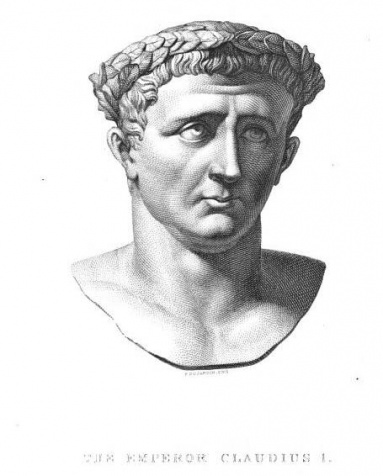
“The only means known to us of combating evil and promoting good in a community with any prospect of lasting success lies in the action of the popular will clearly freely and continuously expressed. Rome is merely an extreme instance of failure from lack of this means of regeneration … This principle is true for all states in all ages, and History, recording endless failures, is one long record of this truth. To improve your citizens, and to interest them in their own real welfare, is the only course that offers a possible means of avoiding the Roman fate.” —William Emerton Heiland, The Roman Fate: An Essay in Interpretation (1922)
“I don’t think there has ever been a leader of comparable responsibilities who wasted more time than Stalin did just sitting around the dinner table eating and drinking,” said Khrushchev.
As an instrument of power, however, spectacle may boomerang on the one who wields it. One January morning, after gorging himself with food and drink (despite having a stomach ache from eating a lavish dinner the night before) Caligula decided to visit a bathhouse. On his way there, as he passed through a dark and narrow passage, he was stabbed. “Jupiter!” he cried before being stabbed some thirty more times. This act of regicide had been planned by his courtiers, senators, and Praetorian Guard, all of whom had had enough of his despotic and murderous caprice.
Recipe for Chicken Elagabalus with White Sauce from Apicius: "Chicken Varius: boil a chicken in the following stock: garum, oil and wine, with a bundle of leek, coriander and savory. When the chicken is cooked, grind pepper, 100 ml garum and the stock, with the bundle of herbs removed. Mix with milk and pour the contents of the mortar over the chicken. Bring to the boil and mix with chopped egg white to thicken. Place the chicken on a serving dish and pour the sauce over it. This is called white sauce.
To dine with Caligula meant being wholly captive to the whim of a ruler whose rule, because it lacked backing from the will of the people, depended at once on both cowing and dazzling them. The means available to Caligula were fairly basic: brute violence and vulgar spectacle. Today, billionaires plunder the public for private gain, offshore their loot, and then demand a more favorable investment climate. And they manage this through tax loopholes, legal firepower, and other subtle ways. As in Caligula's time, much wealth is siphoned upward to the elite, and not enough trickles down to quench the embers of popular outrage. Whether these embers will grow to flames remains to be seen, as does who, if anyone, will be left to fiddle should they do so.







